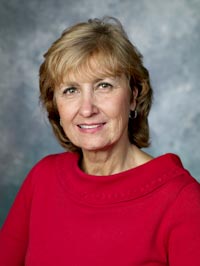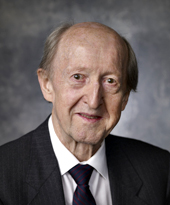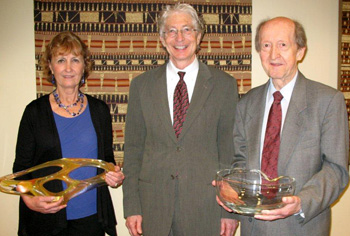The School of Behavioral and Brain Sciences honored two of its best recently, presenting a new teaching award to a longtime faculty member and by highlighting the work of the professor for whom the award was named.

Jan Lougeay is the recipient of the first Aage MøllerTeaching Award, established to honor faculty members in the School of Behavioral and Brain Sciences.
Jan Lougeay, director of clinical education at the Callier Center for Communication Disorders and a clinical lecturer for BBS, received the first Aage Møller Teaching Award. The award was established by Dr. Møller, Margaret Fonde Jonsson Chair in BBS, to promote and recognize outstanding teaching. Lougeay and future recipients will receive an engraved crystal award honoring their achievements.
Lougeay is described by former students and current colleagues as the “go-to” person for direction, advice and encouragement. She has worked closely with Dr. Robert Stillman for the past 32 years to establish UT Dallas’ communication sciences program as one of the nation’s best and fastest-growing.
“In her classes, Jan’s broad knowledge of the practical issues in clinical service and her ability to demonstrate the importance of research in informing clinical practice help students develop the practical knowledge they need to excel in the real world and the research knowledge they need to improve the effectiveness of the services they offer,” said Stillman, professor and program head for communication sciences. “In her clinical teaching she demonstrates the importance of collaboration in clinical service, and with her hands-on approach helps the students become creative problem-solvers.”

Dr. Aage Møller delivered the first BBS Distinguished Lecture. He was honored with the President’s Teaching Excellence Award in 2011.
Lougeay’s teaching at Callier focuses largely on stuttering, voice disorders and autism. She and Stillman developed the Preverbal Program for severely language-impaired toddlers. She founded a summer camp for stuttering children called Tricks for Talking.
“I am thrilled that the committee chose me for this honor,” Lougeay said. “In my years at UT Dallas, I have been privileged to have many gifted teachers among my colleagues. I have aspired to develop the talent I have seen in them. Teaching is very important to me. Being honored for my teaching is extremely gratifying.”
Before Lougeay was presented with the award on April 20, a standing room-only crowd of faculty and students attended the first BBS Distinguished Lecture. The presentation will become another annual tradition for BBS and will always feature one of the school’s top researchers delivering a lecture that he or she has shared with international audiences in the past. Møller was the first faculty member chosen to present the lecture, which he titled, “The Brain is Plastic: For Good and For Bad.”

Dr. Bert Moore (center), dean of the School of Behavioral and Brain Sciences, celebrates the presentation of the first Aage Møller Award with the honoree, Jan Lougeay, and the researcher and professor for whom the award is named, Dr. Aage Møller.
Møller is well known for his innovative research on sensory systems and neural plasticity. Among his most important contributions to neuroscience is his development of a method to reduce the risk of serious complications from brain operations. The technique is used worldwide and known as intraoperative neurophysiological monitoring.
In 2011, Møller was honored with the President’s Teaching Excellence Award. Lougeay said it means even more to receive the BBS teaching prize because of its connection to Moller.
“Aage Møller is among the gifted teachers I have always admired,” she said. “To have my name mentioned in the same sentence with his is amazing.
“Dr. Møller and I had offices next to each other years ago. I remember one day I was grading exams and commented to him with some frustration about the students’ misinterpretation of what I had said. His response was, ‘That is the challenge, isn’t it? To present the information so they can learn it.’ I think of those words so often. They remind me that my focus needs to be not on telling students what I think they need to know, but providing information in such a way that they can make it their own.”